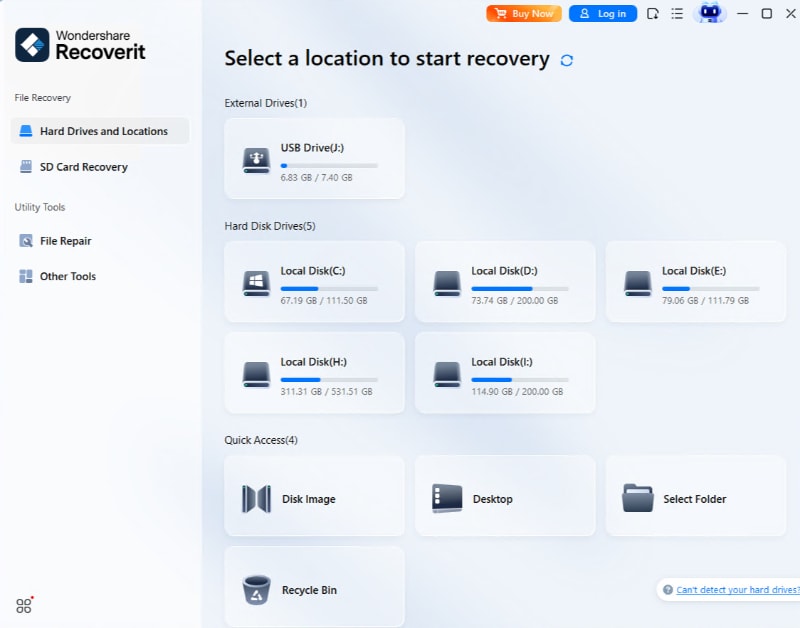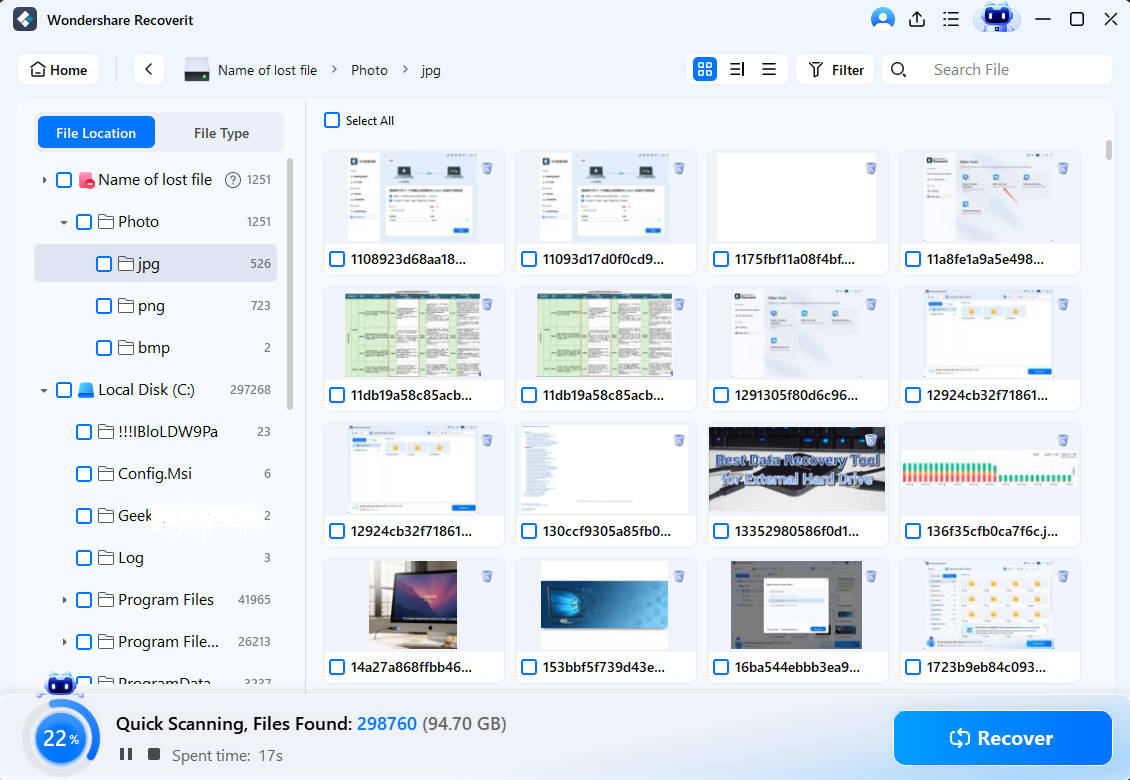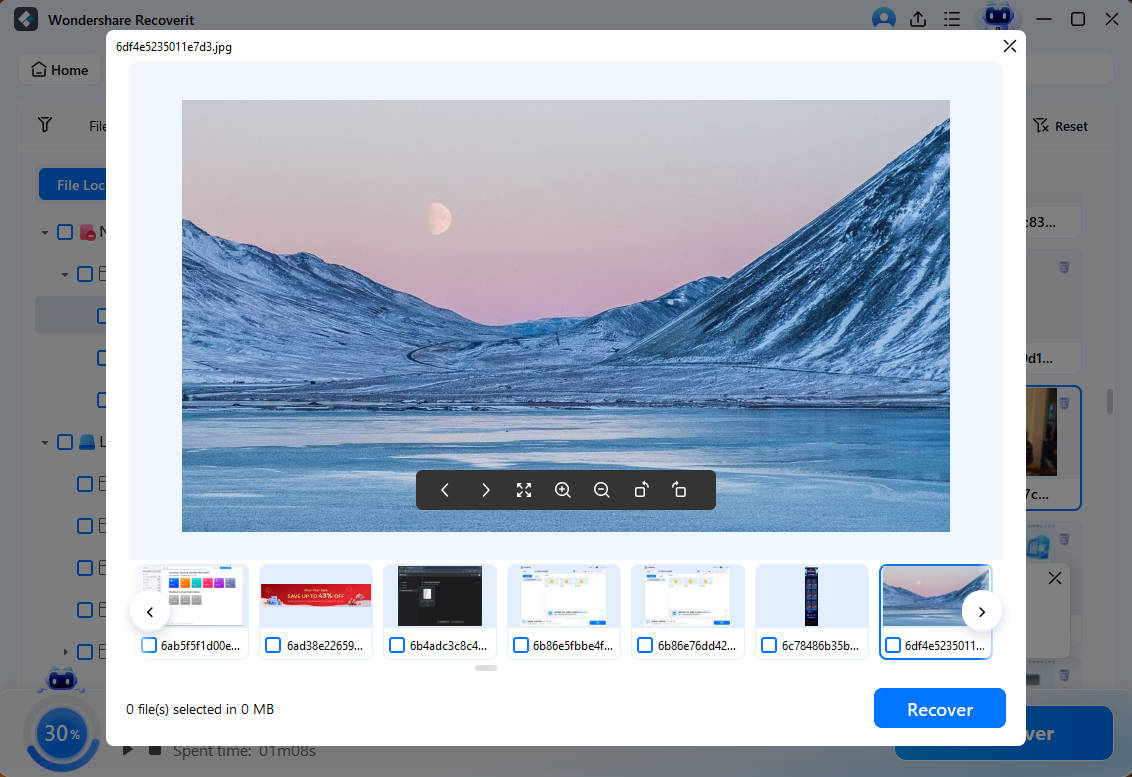Sometimes it becomes indispensable to learn how to disable USB port to prevent unauthorized data transfer or to prevent the use of unauthorized devices. Moreover, the data files in the system can be corrupted if any harmful device is injected into it.
Well, don't panic just yet! We know how scary it feels when you think you've permanently lost precious data from a USB drive.
Whatever the reason, in this comprehensive guide on how to disable usb storage in Windows 10/11, we'll explore different methods, from tweaking hidden settings deep within your system to simple clicks in your computer's control panel.
But why stop there? We'll also share tips on using USB drives efficiently and recovering lost data if things go wrong.
In this article
- Method 1: Unblock/Block USB in the Registry Editor
- Method 2: Unblock/Block USB Storage Devices Using the Device Manager
- Method 3: Uninstall/Reinstall USB Mass Storage Drivers
- Method 4: Configure BIOS Settings to enable USB Drive
- Method 5: Restrict Permissions
- Method 6: Disconnect or Remove the USB Ports Manually
- Method 7: Use the Command Line
- Method 8: Use a USB Drive Disabler/Enabler Tool
- Method 9: Use the Local Group Policy Editor
Why Do You Need to Enable/Disable the USB Ports or Drives?
Before we explain "how," let's look at why you might want to disable or enable USB drives on your Windows computer:
- 🎯Security Concerns: USB drives can be a potential entry point for malware, viruses, and other security threats. Disabling USB ports or storage devices can help mitigate these risks, especially in corporate or high-security environments.
- 🙆Data Leakage Prevention: Organizations often need to block USB storage data transfer to and from USB drives to prevent confidential information from leaving the premises or unauthorized data from entering the system.
- 🔧Bandwidth Management: In some cases, USB drives may consume significant network bandwidth, affecting overall system performance. Disabling USB ports can help optimize network resources.
- ✅Device Troubleshooting: If you're experiencing issues with a specific USB drive or device, temporarily disabling USB ports can assist in isolating and resolving the problem.
- 📎Enable USB Drive Access: Conversely, you may need to enable USB ports or drives if they were previously disabled or if you're facing connectivity issues.
How to Disable/Enable USB Drive on Windows?
There are several methods to disable or enable USB drives on Windows, each with its own advantages and limitations.
Choose the method that best suits your needs and expertise level.
Method 1: Unblock/Block USB in the Registry Editor
The Registry Editor is a powerful tool that allows you to modify various system settings, including USB port and storage device configurations. Here's how:
Step 1: Press the Windows key + R to open the Run dialog box. Type "regedit" in the Run box and press Enter.

Step 2: Navigate to the following key:
HKEY_LOCAL_MACHINE\SYSTEM\CurrentControlSet\Services\USBSTOR
Step 3: Locate the "Start" value on the right-side pane.

Step 4: To disable USB storage access, double-click the "Start" value and change it to 4. To enable usb storage, change the value to 3. Click "OK" to apply the changes.
Method 2: Unblock/Block USB Storage Devices Using the Device Manager
The Device Manager is a built-in Windows tool that allows you to manage and configure hardware devices, including USB ports and drives. Here's how to disable USB storage devices using Device Manager:
Step 1: Press the Windows key + X and select "Device Manager" from the menu.

Step 2: Expand the "Universal Serial Bus controllers" category. Right-click on the USB controller you want to disable usb drive or enable usb storage, and select "Disable device" or "Enable device" from the context menu. Confirm the action when prompted.

This method is convenient for selectively disabling or enabling specific USB controllers or ports.
Method 3: Uninstall/Reinstall USB Mass Storage Drivers
If you want to completely block USB storage devices from functioning on your Windows system, you can uninstall the USB Mass Storage drivers. However, be cautious as this will also disable other USB storage devices like external hard drives and flash drives.
Step 1: Press the Windows key + X and select "Device Manager" from the menu. Expand the "Disk drives" category.
Step 2: Right-click on the "USB Mass Storage Device" and select "Uninstall device." Check the "Delete the driver software for this device" option and click "OK."

Step 3: Restart your computer for the changes to take effect.
To restore USB storage device functionality, you can reinstall the drivers by following the same steps and selecting "Scan for hardware changes" in the Device Manager. By selecting "Scan for hardware changes," you're essentially telling Windows to look for any new or previously disabled hardware components and automatically install the required drivers for them.
This convenient feature saves you from manually hunting for and installing the USB Mass Storage Device drivers yourself.

Method 4: Configure BIOS Settings to enable USB Drive
Some modern computers and laptops offer the option to enable or disable USB ports directly from the BIOS (Basic Input/Output System) settings. This method is particularly useful if you want to permanently disable USB ports or if the operating system methods are not working.
Step 1: Restart your computer and press the appropriate key (usually F2, Del, or F12) to enter the BIOS setup. Navigate to the "Security" or "Advanced" settings section (the exact location may vary depending on your BIOS).

Step 2: Look for an option related to USB ports or storage devices, such as "USB Mass Storage Function" "USB Controller," or similar.
Step 3: Use the provided options to enable or disable usb storage or storage devices as desired. Don't forget to save the recent changes and then Exit the BIOS setup.
Method 5: Restrict Permissions
If you want to selectively allow or deny access to USB drives for specific users or groups, you can adjust the permissions on the USB drive itself or the corresponding drive letter. This method is useful in a shared or multi-user environment.
Step 1: Open File Explorer and navigate to the USB drive or drive letter you want to restrict access to. Right-click on the drive and select "Properties." Click on the "Security" tab. Click the "Edit" button to modify the permissions.

Step 2: Select the user or group you want to grant or deny access to, and check or uncheck the "Allow" or "Deny" boxes for the desired permissions (e.g., Full Control, Read, Write). Click "Apply" and then "OK" to save the changes.

This method allows you to fine-tune access to USB drives based on user accounts or groups, rather than completely disabling or enabling them system-wide.
Method 6: Disconnect or Remove the USB Ports Manually
If you prefer a more hands-on approach or if the software methods are not working, you can physically disconnect or remove the USB ports from your computer. This method is recommended only if you have the necessary technical expertise and access to the internal components of your system.
Step 1: Shut down your computer and unplug it from the power source.
Step 2: Open the computer case and locate the USB ports on the motherboard or chassis. Carefully disconnect the USB ports from the motherboard or remove them from the chassis (if they are removable).

Step 3: Reassemble the computer and turn it on.
Method 7: Use the Command Line
For advanced users comfortable with the command line, you can disable or enable USB storage devices using the built-in diskpart utility.
Here are the steps:
Step 1: Press the Windows key + X and select "Terminal (Admin)". Type "diskpart" and press Enter to launch the disk partition utility. Type "list disk" and press Enter to view a list of available disks.

Step 2: Identify the USB drive you want to disable or enable by its disk number. To disable the USB drive, type "select disk [disk number]" and press Enter, then type "remove" and press Enter.

Step 3: To enable the USB drive, type "select disk [disk number]" and press Enter, then type "online" and press Enter. Type "exit" and press Enter to close the diskpart utility.
This method allows you to selectively disable or enable specific USB storage devices using command-line instructions.
Method 8: Use a USB Drive Disabler/Enabler Tool
If you prefer a user-friendly graphical interface, several third-party tools are available to disable or enable USB drives with just a few clicks. One such tool is "USB Disk Storage Device Disabler/Enabler".
Here's how to use it:
Step 1: Download and install the "USB Disk Storage Device Disabler/Enabler" tool from a trusted source. Launch the tool, and it will automatically detect any connected USB storage devices.

Step 2: Select the USB drive(s) you want to disable or enable from the list. Click the "Disable USB Drives" or "Enable USB Drives" button accordingly. Confirm the action when prompted.
This method is convenient for quickly disabling or enabling USB drives without delving into system settings or the command line.
Method 9: Use the Local Group Policy Editor
For systems running Windows Professional, Enterprise, or Education editions, you can use the Local Group Policy Editor to disable or enable USB storage devices. Here's how:
Step 1: Press the Windows key + R to open the Run dialog box. Type "gpedit.msc" and press Enter to launch the Local Group Policy Editor.

Step 2: Navigate to "Computer Configuration > Administrative Templates > System > Removable Storage Access". Double-click the "Removable Disks: Deny execute access" policy setting.

Step 3: Select "Enabled" to disable USB storage devices or "Disabled" to enable them. Click "Apply" and then "OK" to save the changes. Restart your computer for the changes to take effect.
This method allows you to centrally manage and control USB storage device access across multiple users or computers within an organization or domain environment.
Bonus: How to Recover Data from Crashed USB Drive
Even with being careful, sometimes accidents happen, and your USB drive can get messed up, causing you to lose important files. Some of the methods mentioned above, like using the Registry Editor, Command Line, or physically disconnecting USB ports, carry a higher risk of accidental data deletion or drive corruption if not executed correctly.
But don't worry, there's a handy tool called Recoverit that can save the day! Recoverit is a really smart and easy-to-use program that can help you get back lost or deleted files from USB drives, external hard drives, and other storage devices.
With Recoverit, you don't have to worry about losing your precious data. Here are some key features that make Recoverit stand out:
- Comprehensive File Format Support: Recoverit supports over 1000+ file formats, ensuring that no matter what type of files you've lost, it can help you retrieve them.
- Easy Recovery Process: Recoverit boasts an intuitive and user-friendly interface, making the data recovery process a breeze, even for those who are not tech-savvy.
- Trusted and Secure: Recoverit is trusted by millions of users worldwide and has over 20 years of experience in data recovery. It prioritizes data privacy, keeping your personal information safe and secure.
With Recoverit, you can easily retrieve your valuable data in just a few simple steps:
Step 1: Download and install Recoverit on your Windows computer. Connect the USB drive or storage device from which you want to recover lost data. Launch Recoverit and select the USB drive or storage location from the main screen.

Step 2: Click the "Start" button to initiate a scan for lost or deleted files.

Step 3: Once the scan is complete, Recoverit will display a list of recoverable files. You can preview the files to ensure they are the ones you need. Select the files you want to recover and choose a safe location on your computer or another storage device to save the recovered files.

Step 4: Click the "Recover" button, and Recoverit will start retrieving your lost data from the USB drive or storage device.
It's that simple! With its advanced algorithms and intuitive interface, Recoverit offers a high success rate of 98% in recovering your precious data. Don't let data loss become a nightmare – try Recoverit today and rest assured that your precious memories and files are just a few clicks away from being recovered.
Conclusion
The ability to disable or enable USB drives on Windows is a valuable skill that can help enhance security, prevent data leaks, troubleshoot issues, and maintain control over your system. Whether you choose to use the Registry Editor, Device Manager, BIOS settings, or other methods, this guide has provided you with a comprehensive understanding of the various techniques available.
By mastering these techniques and following best practices, you can confidently navigate the world of USB drives on Windows, ensuring the safety of your data and the smooth operation of your system. And if you ever encounter data loss, remember that Recoverit, with its powerful recovery capabilities and user-friendly interface, can be a lifesaver in retrieving your precious files.
Try Wondershare Recoverit to Recover Data from USB Drive

FAQ
What does disable USB mean?
"Disable USB" refers to preventing your computer from recognizing or accessing USB devices, such as USB drives, external hard drives, or other USB-connected peripherals. This can be done for security reasons, to prevent data transfer, or to troubleshoot issues.Can I disable USB drives without affecting other USB devices like keyboards or mice?
Yes, most methods allow you to selectively disable or enable specific USB controllers or storage devices without impacting other USB peripherals.Will disabling USB drives prevent data transfer over other interfaces like Bluetooth or WiFi?
No, disabling USB drives only affects the USB ports and storage devices. Data transfer over other interfaces like Bluetooth or WiFi will remain unaffected.Can I temporarily disable USB drives without making permanent changes to the system?
Yes, methods like using the Device Manager or adjusting permissions allow you to temporarily disable USB drives without making permanent changes to the system registry or BIOS settings.How do I enable USB disabled by the administrator?
If USB has been disabled by an administrator or system policy, you may not have the necessary permissions to enable it yourself. In such cases, you'll need to contact your IT administrator or someone with administrative rights to re-enable USB access on your computer. You can use methods like the Registry Editor, Group Policy Editor, or BIOS settings to restore USB functionality.



 ChatGPT
ChatGPT
 Perplexity
Perplexity
 Google AI Mode
Google AI Mode
 Grok
Grok























